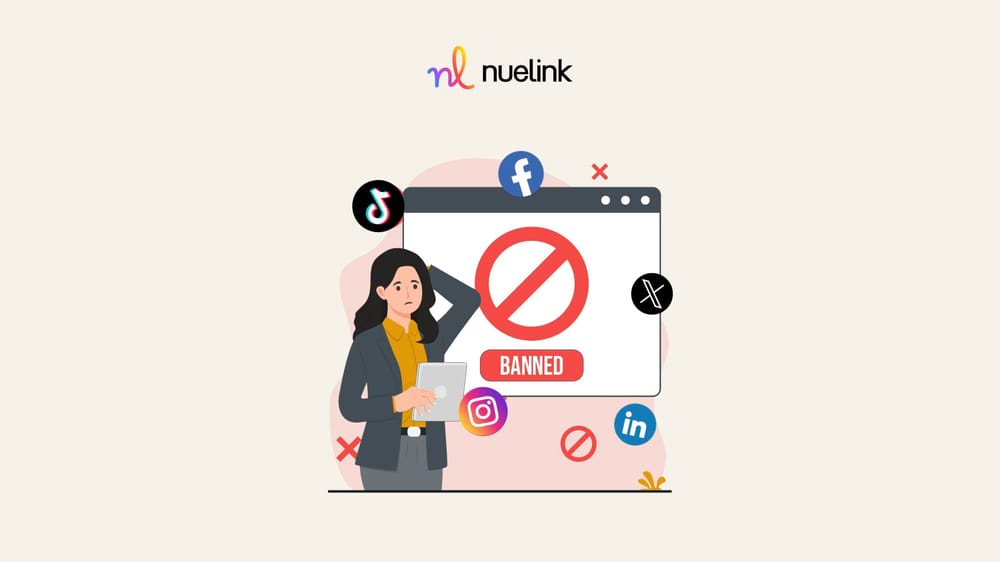Building a personal brand is essential for anyone looking to succeed in their career or business in today's fast-paced world. It is important to identify your passions and values and create a brand that reflects them while aligning with your professional goals.
In this blog post, we will discuss some effective strategies to build your personal brand on social media.
Table of Contents:
- Do Something you Love
- Complete your Profiles
- Post on a Schedule
- Interact with your Audience
- Integrate your Website
Do Something you Love
Your personal brand should reflect your likes, interests, and values, and it should align with your professional goals.
Developing a personal brand that accurately represents you and your passions is essential for achieving success in your career or business. It's important to identify what you're truly passionate about and what you want to achieve in your niche. Your personal brand should reflect your likes, interests, and values, and it should align with your professional goals.
To begin building your personal brand, start by identifying what it is that you want to do. What are your career goals, and how do you want to make an impact in your niche? Once you have a clear understanding of what you want to achieve, think about the attributes and qualities that express your passion.
For example, if you're interested in becoming a public speaker, market yourself as someone with exceptional public speaking skills and an ambition to share your expertise with others. Highlight your experience and credentials, and showcase your unique perspective on topics related to your field.
Your personal brand should also align with your personal values and beliefs. Authenticity is crucial to building a successful personal brand online, so be sure to represent yourself honestly and transparently. If you're passionate about a cause, incorporate that into your personal brand and use your platform to advocate for it.
Complete your Profiles
This is crucial in establishing your brand on social media. One key component of a complete social media profile is the profile picture. While seemingly simple, your profile picture plays a critical role in social media branding.
It's important to ensure that your picture or logo is prominently displayed across all social media platforms. This will create a sense of uniformity and make it easier for users to recognize and remember your brand.
Another important aspect of your social media profile is the bio section. This section should provide a concise summary of who you’re and what you have to offer.
While some social media platforms offer more space for bios than others, it's important to strike a balance and avoid overwhelming users when they first discover you. Aim to limit your bio to two or three sentences that convey your brand's unique value proposition.
Post on a Schedule
Developing a posting schedule is a critical step in any social media strategy.
Developing a posting schedule is a critical step in any social media strategy. Your posting schedule will determine what type of content you post, how often you post, what time of day you post, and what's included in each post.
While these factors will vary depending on the platform you are using, it's important to optimize your posts to reach as many users as possible while still staying true to your personal brand. Consistency in your posts' frequency and content type is key to building your branding in the eyes of your audience.
When creating a posting schedule, it's important to keep in mind the nuances of each platform you are using. For example, Twitter may require more frequent updates than LinkedIn, and Instagram may prioritize high-quality visuals over lengthy captions.
Take the time to research best practices for each platform and experiment with different posting strategies until you find the right balance for your business. You can also take a moment to optimize your platforms every once in a while.
Interact with your Audience
80% of Twitter users feel more positive about brands that respond to them.
In addition to developing a posting schedule, it's crucial to interact and engage with your audience regularly.
Social media platforms are designed to promote interaction, and the more active you are, the more likely these platforms will promote your posts to a wider audience. Furthermore, interacting with your audience demonstrates to current and potential followers that you're responsive, trustworthy, and credible. In fact, a report showed that nearly 80% of Twitter users feel more positive about brands that respond to them.
There are several ways to engage with your audience on social media. One of the simplest is to reply to all of the comments on your content, even if it's just a quick thank you or a brief response to a question.
Another effective strategy is to share content produced by users on your profiles. Not only does this create a sense of community around your brand, but it also provides valuable social proof that can attract new followers. Finally, commenting on the profiles and posts of your target audience can be an excellent way to start conversations and build relationships with your audience.
Integrate your Website
Adding a link to your website in your social media profile bio is a vital strategy for integrating your website into your social media presence.
To boost your brand presence on social media, you need to find ways to integrate your website into the platform effectively. Although social media platforms offer some selling functionality, your website or blog remains the superior converting tool.
Adding a link to your website in your social media profile bio is a vital strategy for integrating your website into your social media presence. However, there are other useful strategies that can help you connect your social media audience with your website.
Sharing blog posts regularly on your feed is an excellent way to provide value to your followers while promoting your website. By creating engaging and informative content, you can build trust and credibility with your audience, ultimately driving more traffic to your website. You can use social media management tools like Nuelink to automate this process. Nuelink will automatically create and share any new addition from your blog on social media with links to everything.
Another way to connect your social media audience with your website is by taking advantage of other link opportunities on each platform. For instance, on Instagram, you can add a clickable link in your story or use shoppable tags in your posts. On Twitter, you can pin a tweet that links to your website at the top of your profile.
It's also essential to include a clear call-to-action in your social media posts to encourage users to click on the links that you share.
Building a personal brand is a crucial step in achieving success in any career or business. By using social media to promote your brand, you can reach a wider audience and showcase your expertise and values. Remember to stay true to your brand's values and voice, and be consistent in your approach, and you will see the benefits of a strong personal brand on social media.






